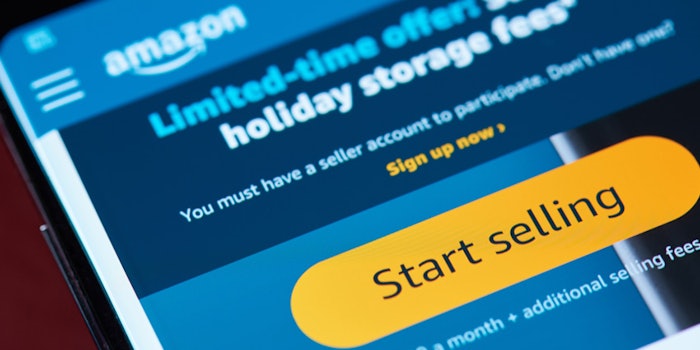
Amazon may just be the best thing for independent business owners since the invention of free markets themselves. More than 2 million entrepreneurs use Amazon to sell their products, and many have become successful and wealthy doing it.
Truthfully, many have also failed and lost their life savings—and it’s often because they missed out on the basics. Here are four of the most common mistakes Amazon sellers make and advice on how to avoid making them yourself.
Previously: Building Your Amazon Beauty Strategy
1. Listing Incorrectly
You’re selling a new beauty product and you’re determined to break open a big-time income stream. For inspiration, you pay attention to top-performing brands, products and advertisements. You design your label to emulate the most successful products, offer your item—which compares very nicely to the best sellers—and price them competitively. Obviously, you’re on the way, right.
Except you’re not. Unfortunately, all too many cases end in never selling a single item, which almost always comes down to messing up your listing (which can happen in roughly a million different ways). This doesn’t reflect on your intelligence, attention to detail or ability to run a successful business; it just reflects inexperience.
The reality is that there are entire courses about how to create highly effective Amazon listings. Some of these classes last for months, cost thousands of dollars and probably ought to translate to some form of business school credit. But there are also loads of ebooks, articles, videos and webinars about how to do the same thing.
It doesn’t really matter where you get the education, the point is that you have to get it somewhere. If you don’t learn how to list your item on Amazon the correct way, you’re basically falling down at the starting gate.
2. Mismanaging Inventory
The importance of listing your products in a way that allows them to be found can’t be overstated. Obviously, it is doable—thousands of people are doing it very successfully right this very moment. For the sake of learning, let’s say you do your due diligence and make it past that stage. Maybe you’re even starting to sell a few products.
In all likelihood, you’ll start to develop a system for stocking your products based on how many you’re selling now and how many you expect to sell in the near future. The problem is that your system will be nothing like Amazon’s system.
The website uses a sophisticated algorithm to limit the number of shoppers who will find your products unless you, a new and untrusted seller, massively overstock your supply. This is the only way Amazon knows you won’t run out, and that’s a key factor in the algorithm’s ability to recommend your product or shop.
This is one of the more intricate details that successful sellers are familiar with, but there are more basic lessons you’ll need to grasp as well, such as ordering your products from upstream suppliers way ahead of time in order to keep the inventory full.
3. Believing Your Product Will Sell Itself
Let’s say you crack the listing code and you’re an expert in supply chains, so inventory isn’t an issue for you. Your listings are performing and you’ve got plenty of product to back them up. So now you can coast, right? Wrong again.
This can be confusing for a lot of new sellers because Amazon gives you what they call a “honeymoon period.” During the first 45 days of a new product launch, the site rewards you by boosting your product and pushing shoppers in your direction.
Once that time is up, though, you’re expected to drive the traffic yourself, which is something you should be doing all throughout the honeymoon period to ensure your traffic doesn’t drop off entirely.
There are a number of ways to do this: Amazon offers plenty of on-site and off-site advertising options. Facebook, YouTube, TikTok and Instagram are all great marketing channels, as well.
Regardless of where you put your efforts, early in your venture is the time to show the Amazon algorithms that your company is big (even if it’s not) by driving traffic to your products from as many directions as possible.
The need to advertise may seem like common sense, but failing to do so is a trap that many business owners fall into, and it definitely extends beyond Amazon and the beauty sector. Like the Holy Grail of enterprise, entrepreneurs can’t seem to stop themselves from believing in a product so good it sells itself.
4. Not Choosing the Right Manufacturer
In color cosmetics, skin care and related categories, most sellers aren’t manufacturing their own products. They may do the design, branding, advertising and may even choose the ingredients, but the end product is typically delivered by a third-party manufacturer.
What savvy brands pick up on quickly is that not all manufacturers are equal. Some will do the minimum, while others see the value in working closely with brands to achieve better outcomes for all parties.
In other words, the ideal manufacturer isn’t just transparent and reliable; they’ll also know the above challenges intimately and be willing to offer guidance to new sellers who are working to overcome them.
Put all these ingredients together—effective listings, good inventory control, smart advertising and a reputable manufacturer—and the sky’s the limit.










